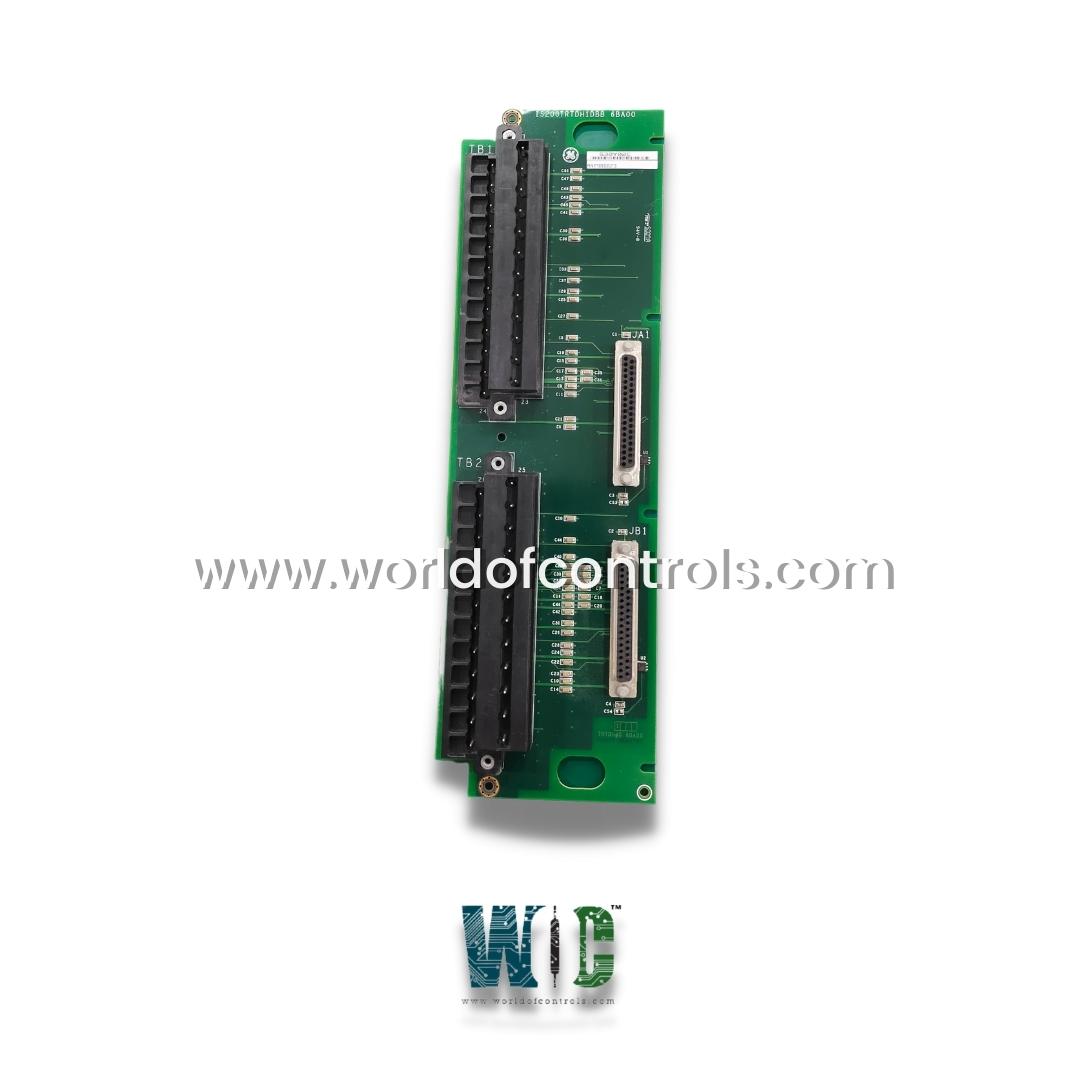
World Of Controls understands the criticality of your requirement and works towards reducing the lead time as much as possible.
IS200TRTDH1DBB - Resistance Temperature Device Input Terminal Board is available in stock which ships the same day.
IS200TRTDH1DBB - Resistance Temperature Device Input Terminal Board comes in UNUSED as well as REBUILT condition.
To avail our best deals for IS200TRTDH1DBB - Resistance Temperature Device Input Terminal Board, contact us and we will get back to you within 24 hours.
SPECIFICATIONS:
Part Number: IS200TRTDH1DBB
Manufacturer: General Electric
Series: Mark VIe
Number of Channels: 8
Span: 0.3532 to 4.054 V
Maximum lead resistance: 15 Ohm
Operating system: QNX
Product Type: Resistance Temperature Device Input Terminal Board
Microprocessor: Intel Pentium 133 MHz
Trip Solenoid Rating: 125 V dc
Programming: Boolean
Ethernet interface: Thinwire 10Base2
ISBus interface: Twisted pair RJ-45
Power requirements: +5 V dc
Dimensions: 17.8 cm wide x 33.02 cm
Operating temperature: 0 to 60 °C
No.of Analog Voltage Inputs: 6
Repair: 3-7 Day
Availability: In Stock
Country of Origin: United States
Manual: GEH-6421H
FUNCTIONAL DESCRIPTION:
IS200TRTDH1DBB is a Resistance Temperature Device Input Terminal Board manufactured and designed by General Electric as part of the VIe Series used in GE Distributed Control Systems. The TRTD Resistance Temperature Device (RTD) terminal board is designed to accommodate 16 three-wire RTD inputs, which are connected through two barrier-type terminal blocks. It features noise suppression circuitry to guard against surges and high-frequency interference. The TRTD interacts with one or more I/O processors that convert the RTD signals into digital temperature readings for transmission to the controller. In the Mark VIe system, the PRTD I/O pack operates in conjunction with the TRTD. Note that only simplex systems are compatible. A total of 16 inputs can be achieved by connecting two PRTD packs to the TRTDH1D and TRTDH2D. There are four versions of TRTD as follows:
INSTALLATION:
The sixteen RTDs are connected directly to two terminal blocks on the terminal board. Each block is secured with two screws and features 24 terminals that can accommodate wires up to #12 AWG. A shield terminal strip linked to the chassis ground is positioned immediately to the left of each terminal block. In a Mark VI system, the TRTDH1B offers redundant RTD inputs by distributing them to three VRTD boards located in the R, S, and T racks. While the inputs adhere to the same environmental standards, codes, resolution, suppression, and functional requirements as the TRTDH1C terminal board, the fast scan option is not supported.
OPERATION:
The terminal board provides a 10 mA DC multiplexed excitation current to each RTD, which can be either grounded or ungrounded. The 16 RTDs can be installed up to 300 meters (984 feet) away from the turbine control cabinet, with a maximum allowable two-way cable resistance of 15 Ω. The A/D converter on the I/O processor board samples each RTD signal and the excitation current at four times per second during normal mode scanning and 25 times per second in fast mode scanning, based on a time sampling interval tied to the power system frequency. The software handles the linearization for 15 different RTD types.
Open and short circuits in the RTDs are identified through out-of-range values. If an RTD is found to be outside of hardware limits, it is excluded from the scanned inputs to avoid affecting other channels. Repaired channels are automatically reinstated after 20 seconds, but can also be restored manually. All RTD signals feature high-frequency decoupling to the ground at the point of entry. The I/O processor manages RTD multiplexing with redundant pacemakers, ensuring that the failure of a single cable or I/O processor does not result in the loss of any RTD signals within the control database.
WOC has the largest Stock of GE Distributed Turbine Control Systems OEM Replacement Parts. We can also repair your faulty boards and supply unused and rebuilt boards backed up with a warranty. Our team of experts is available round the clock to support your OEM needs. Our team of experts at WOC is happy to assist you with any of your automation requirements. For pricing and availability on any parts and repairs, kindly contact our team by phone or email.
What is the purpose of the TRTD terminal board?
The TRTD terminal board accepts multiple RTD inputs, converting them into digital temperature values for monitoring and control in turbine systems.
How often does the I/O processor board sample RTD signals?
In normal mode, the I/O processor samples RTD signals and excitation current four times per second, and in fast mode, it samples 25 times per second.
How does redundancy work in the RTD multiplexing system?
Redundant pacemakers coordinate RTD multiplexing, ensuring that the loss of a single cable or I/O processor does not affect RTD signals in the control database.